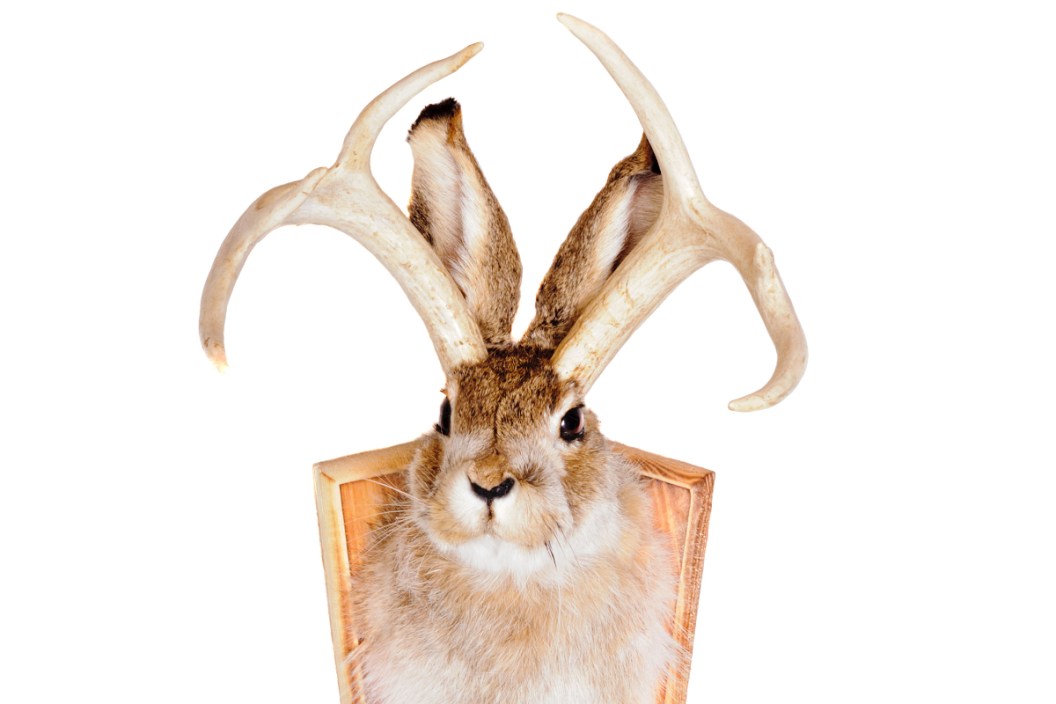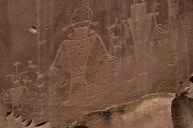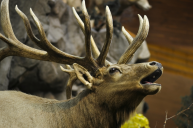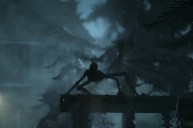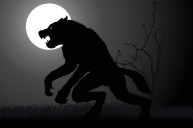Are jackalopes real?
American folklore is rich with all sorts of tale tales and legendary critters. Things like bigfoot or dogman are local legends in many parts of the country. One of the more unusual mythical creatures that seems more specific to the American West is that of the jackalope.
If you have been in a tourist trap in a western state, odds are you have seen taxidermy jackalope heads for sale as gifts before. They usually come accompanied with tales claiming the horned hares are the real McCoy. Some gift shop owners may even claim sightings of the animals in an attempt to trick unsuspecting tourists.
While that may fool some greenhorn city slickers, most of us are smart enough to know the jackalope as the hoax that it is. Still, it got us wondering. What are the origins of this tall tale? Also, most legends have a hint of truth to them. Is there anything in natural history that closely resembles the jackalope legend?
What is a jackalope?
Simply put, the jackalope is a mythological creature of the American west that looks like a regular jackrabbit. However, it allegedly has a pair of antlers growing from the top of its head. At some point someone decided to combine the name of the pronghorn antelope with jackrabbit, thus the name "jackalope." Even though that name does not make much sense considering the horns of an antelope are dramatically different than the antlers used in the creative taxidermy mounts made and sold to tourists.
As the popularity of the jackalope grew, so did the tall tales about it. Legend now has it the creature can mimic a human voice, sometimes singing back to cowboys gathered around a campfire at night. They also allegedly are dangerous and will attack humans. One of the most humorous legends about the creature is that to catch one, you must use the right bait. The bait of choice? Whiskey of course!
Is there any truth to the myth at all?
Some may assume there is no truth at all to the legend of a horned rabbit. However, it turns out that is not the case. Some scientists have since theorized that the legend may have spawned out of sightings of rabbits with a cancerous infection called shope papilloma virus or SPV.
Unfortunately, in rabbits, this type of virus causes large, hard, tumorous growths on the animal's head that closely resemble the horns of a pronghorn. Any hunters who shot such a rabbit were probably perplexed. In that case, the legend of a horned rabbit would seem to explain what they had saw, thus furthering the myth even more.
The Legend is Older Than You Think
While the idea of a jackrabbit with antlers or horns might seem like a uniquely American idea, it turns out it is not. Although it is not likely the guys who popularized the legend of horned rabbits here in North America likely knew that. (More on them later.) No, it seems that images of rabbits with horns go way back. An early piece of Persian art from as far back as the 13th century depicts a horned rabbit.
Although, that earliest version seems to portray one with just a single horn. It looks more like a unicorn than the mounted jackalopes found in every tourist shop from the plains to the Rocky Mountains. In 1575, Flemish painter Joris Hoefnagel painted a rather strange piece called "Animalia Qvadrvpedia et Reptilla" that portrays a few rabbits. One of which looks strikingly close to the American version of the jackalope.
There is also the German folklore tale of the wolpertinger, an animal that usually has a rabbit's head. The descriptions and illustrations of this strange tale vary. However, many portray a rabbit that has the antlers of a deer. All these examples are slightly more obscure, and it seems none took off like the American version of the jackalope which did not become popular until the 1930s.
The First Jackalope
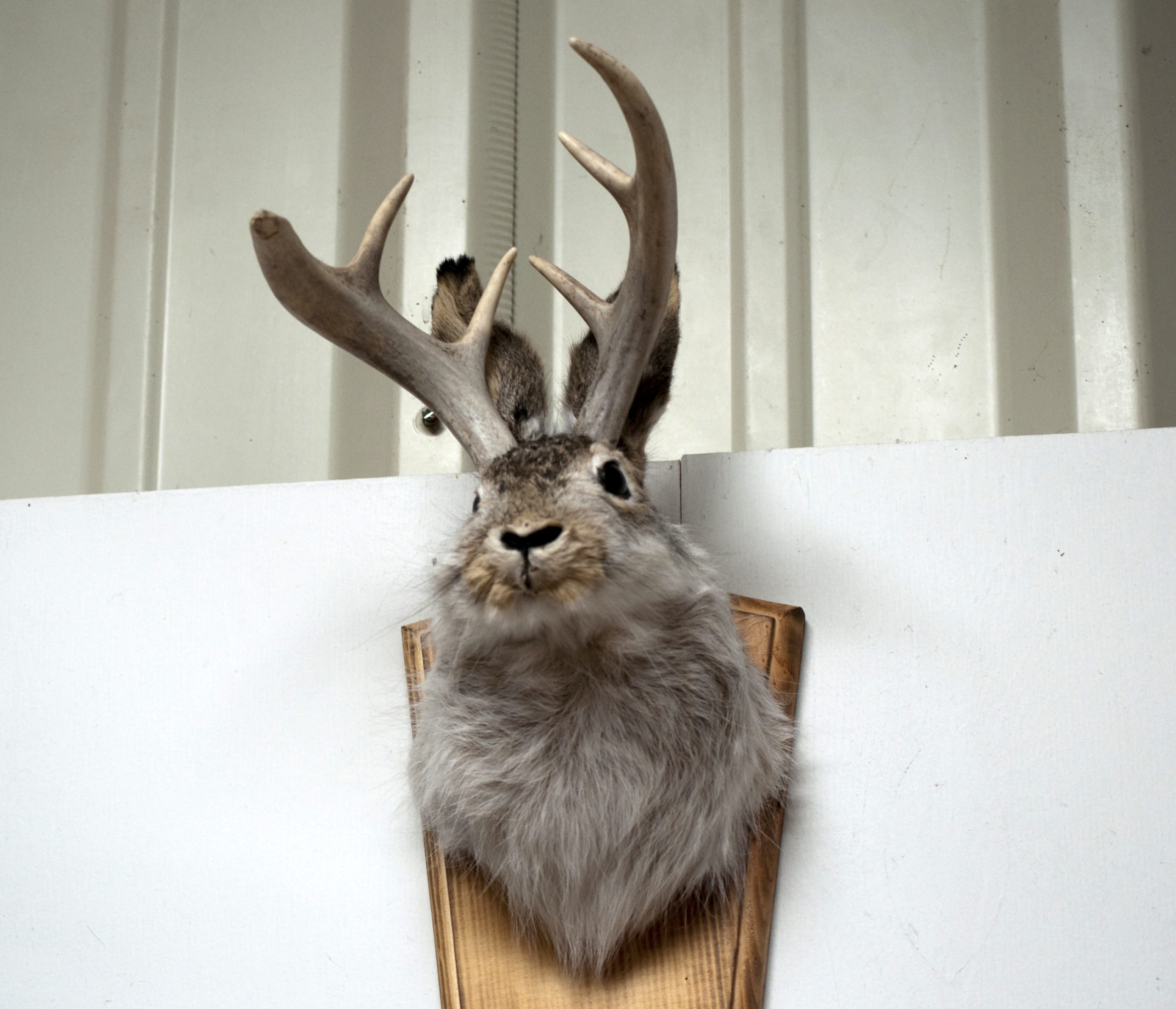
Wikimedia Commons: CGP Grey
While the legend of the jackalope seems to stretch way back, it turns out the American version is younger than you might think. According to an old article published in the New York Times, the first mounted jackalope was created by brothers and taxidermists Ralph and Douglas Herrick back in 1934 in Douglas, Wyoming. According to the brothers, they had a pair of deer antlers laying on their shop floor that just happened to get placed next to a fresh rabbit kill before dinner. Ralph said it was Douglas who had the lightbulb go off in his head.
"When we came back, Doug said: 'Let's mount it the way it is,'" Herrick told the paper.
Now, perhaps the first jackalope would have been a singular piece of unique folkart. A joke between brothers. It may have ended up lost to time in some dusty attic had the brothers kept it. Instead, they sold it to a local by the name of Roy Ball, who hung it in a local hotel and the popularity snowballed from there. In a funny twist to the story, the legend of the jackalope later grew to name Ball as the first man to see a jackalope in the wild back in the 1800s.
In any case, the seed was planted and the brothers were soon making lots of money selling the creative pieces of taxidermy to amazed tourists, many of whom thought they were buying a real legendary animal.
The legend today
Sadly, the original jackalope mount was stolen in 1977. Still, the legend of the jackalope only grew from there. Now you can find tourist traps promoting the non-existent animals across Wyoming, Colorado, New Mexico, and Arizona. States like the Dakotas and Nebraska have also embraced the legend. World-famous Wall Drug in South Dakota has a giant one with a saddle on their grounds that kids can sit on and get their photo taken. You can even buy a mount there to take home and hang on your wall.
However, no town has embraced the jackalope quite like Douglas, Wyoming where the Herrick brothers built the original back in the 1930s. It led the Douglas Chamber of Commerce to proudly proclaim the town the "Jackalope Capital of the World." They have not one, but two giant jackalope statues. Tourist shops also sell "jackalope milk" and "jackalope hunting licenses." Although, if you read the fine print on the licenses, the season runs only on a non-existent day, June 31, "between sunrise and sunset only." The town has even incorporated the jackalope into their official logo. According to locals, they have people show up every day who are convinced the creatures are real!
The jackalope has also since appeared in pop culture. The critters have appeared in cartoons, TV shows, movies and even video games like Red Dead Redemption, where you could actually hunt the strange warrior rabbits. The jackalope may not be a real animal, but it has firmly engrained itself into the culture of the American west. Especially with hunters and sportsmen and women. We imagine their popularity will continue for many years to come.
For more outdoor content from Travis Smola, be sure to follow him on Twitter and check out his Geocaching and Outdoors with Travis YouTube channels.
NEXT: THE AXIS DEER AND HOW THEY'RE IMPACTING PARTS OF THE UNITED STATES
WATCH
